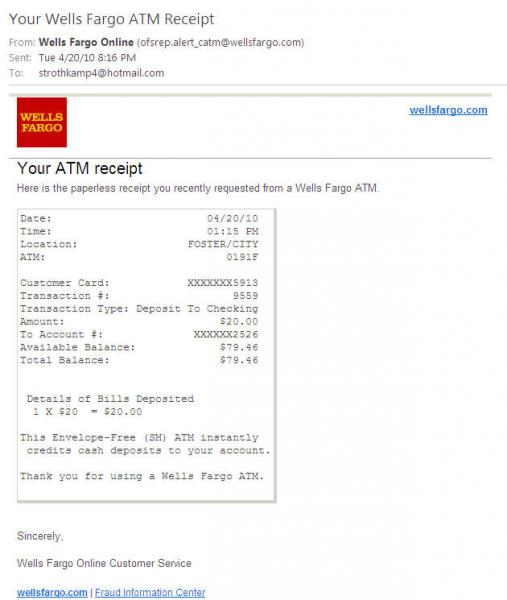Wells Fargo Provides A Real-World Cross-Channel Example For eBusiness
“Cross-channel” is a term (or shall I say a buzzword) that is thrown around by many and understood by few. Seldom does a week go by that a vendor or client mentioning their objectives or strategy doesn’t throw out “cross-channel” or “multi-channel” or something along those lines.
With this in mind, I have made it my personal goal to seek out real-world examples of cross-channel at work; examples that have a clear benefit both to a customer and to a provider. Progressive Insurance’s cross-channel save and retrieve functionality is a great example of cross channel at work that I have written about before, but I recently came across another:
Wells Fargo offering customers the opportunity to email ATM receipts to their email address on record.
This feature gets at the heart of a concept I have been thinking about for a while; the concept that the Web can have a role to play in enhancing offline processes that already exist. I mean the emailed receipt doesn’t replace the trip to the ATM, but it does make it better by:
- Reducing cost – while likely small, the cost of paper and ATM restocking is reduced if receipts can be emailed.
- Being environmentally friendly – Less paper, more trees. Easy enough.
- Increasing security – No more stray ATM receipts potentially falling into the wrong hands
- Providing better record keeping – Now a customer can keep their ATM receipts in one place (and I don’t mean their wallet which is what I do) and ensure that they don’t lose any receipts along the way – a major source of frustration when balancing a checkbook.
- Encouraging customers to provide an email address – Listen up marketing folks!! Customers will provide their email address if there is a value in doing so. The convenience of emailed ATM receipts is a value and would clearly encourage customer to provide their email address.
In your eBusiness strategies, I challenge you to think about ways in which the Web can play a role in enhancing offline processes to make them better. That to me is a key component that is often missing in the definition of cross-channel related to the Web.
I encourage you to comment with cross-channel examples you may have heard about.
Brad